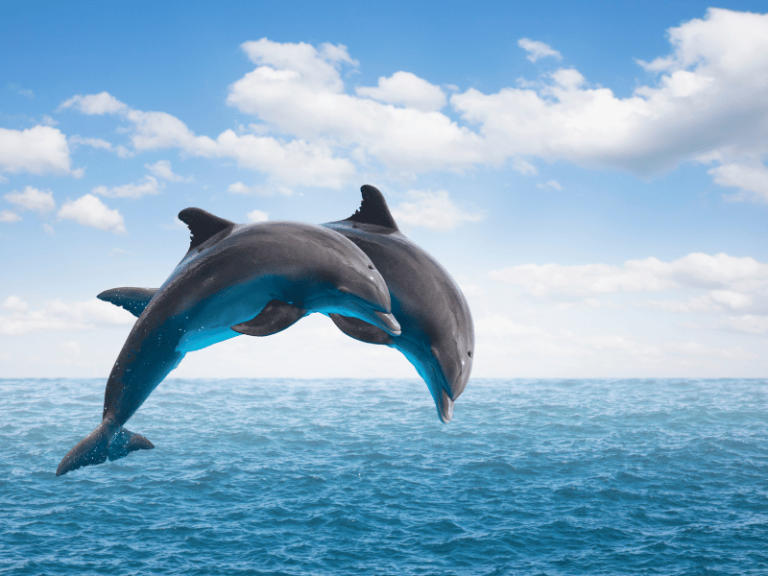Among the marine mammals, dolphins are perhaps less familiar to many people. Dolphins inhabit the Pacific, Atlantic, and Indian Oceans, often swimming in groups, frolicking around ships, and consuming garbage thrown overboard.
Dolphins are adept “swimmers” in the ocean. According to marine biologists, the swimming speed of a mackerel is about 7.8 meters per second, while a sailfish can reach up to 10 meters per second. These two fish hold the record for “fastest swimmers” among fish species. However, dolphins, mammals, swim at a high speed of 15 meters per second, leaving mackerel, sailfish, and even ordinary ships and submarines far behind.
Why can dolphins swim so fast?
We all know that whether it’s a submarine or a dolphin, any object capable of fast navigation and diving must have a streamlined body shape to achieve astonishing speeds. However, friction still occurs between the hull and the fish body surface with the water flow. When the speed is slow, the water flow smoothly passes over the surface of the object; but when the speed reaches a certain level, factors cause the water flow on the surface of the object to become chaotic and the resistance increases sharply. The water flow on hard surfaces such as steel plates is particularly susceptible to chaotic phenomena. As a result, about 90% of the propulsion of submarines is used to restrain the resistance produced by such friction, a regrettable waste. However, an object with appropriate softness and an extremely fine uneven surface can cleverly absorb and eliminate the factors that cause chaotic phenomena in stimulated water flows. Based on scientific calculations, if a dolphin measuring 5 meters long swims at a speed of 15 meters per second without the water flow becoming chaotic, the frictional resistance of its body will be reduced to about one-twentieth of its original value. For this reason, scientists believe that dolphins have a special structural organization on their bodies that eliminates frictional resistance.
Scientists studying this issue dissected the entire body of dolphins and finally discovered the secret on their skin. It turns out that the surface of a dolphin’s skin is divided into three layers: a very thin horny membrane, epidermis, and dermis. Countless hollow protrusions grow in the dermal part, resembling small cylindrical tubes “planted” in the black epidermal layer. Researchers were particularly interested in the elastic skin covered with capillary tubes. They used specially elastic rubber to imitate dolphin skin and made a synthetic leather film. Numerous small and hollow rubber protrusions were intentionally made inside, with interconnected channels flowing through them. The surface of the film is very smooth and elastic, reducing the resistance generated when it contacts the water surface. Ships covered with this film on their hulls can accelerate their sailing speed without increasing power and reduce the resistance of water flow on the ship by 50%. This proves that the dolphin’s skin with its special structural organization is the sole reason for its fast swimming in the ocean.

